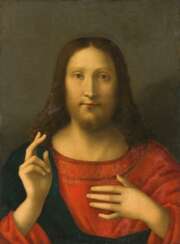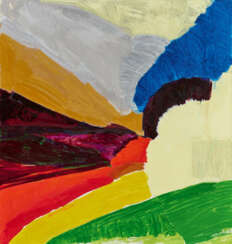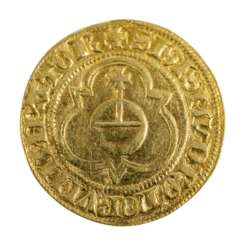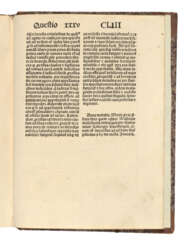143

Giovanni Bellini was a renowned Italian painter, celebrated for his pivotal role in the Venetian Renaissance. Born around 1430 in Venice, Italy, Bellini's work is distinguished by its innovative use of color, keen interest in light, and meticulous brushwork, which marked a significant departure from the styles of his predecessors and contemporaries. He is acknowledged as one of the most influential figures of the Bellini family, a lineage of esteemed Venetian painters that profoundly shaped the course of Venetian art.
Bellini's oeuvre spans religious altarpieces, portraits, and mythological scenes, demonstrating a gradual evolution from the narrative-driven compositions of the Early Renaissance to a more nuanced naturalism and emotional depth. Notable works include the "San Zaccaria Altarpiece," celebrated for its serene beauty and imposing presence, and "The Feast of the Gods," a secular piece illustrating Bellini's late career shift towards more naturalistic mythologies and exploration of erotic themes in accordance with the trends of early 16th-century Renaissance art.
His early works, characterized by the use of tempera, exhibit a unique blend of the Paduan school's severity and a profound religious sentimentality, setting the stage for his later mastery of oil painting. This mastery allowed Bellini to achieve unparalleled atmospheric effects and a harmonious blend of colors, contributing significantly to the development of Venetian painting. His contributions were not limited to his own works; Bellini also played a crucial role as a teacher, influencing future generations of artists including Giorgione and Titian, thus ensuring his lasting impact on the Renaissance art movement.
Giovanni Bellini's works are preserved in several prestigious museums and galleries worldwide, serving as a testament to his enduring legacy in the art world. His ability to infuse his paintings with a sense of divine tranquility, coupled with his innovative techniques, has cemented his status as a key figure in the history of Western art.
For collectors and experts in art and antiques, Giovanni Bellini's work represents not only a pinnacle of Renaissance artistry but also a bridge between the medieval and modern worlds. His nuanced approach to color, light, and composition continues to inspire and attract admiration from across the globe.
Stay updated on new discoveries, sales, and auction events related to Giovanni Bellini's work by signing up for our updates. This subscription ensures you're informed about the latest opportunities to engage with the legacy of one of Venice's most illustrious painters.


Giovanni Bellini was a renowned Italian painter, celebrated for his pivotal role in the Venetian Renaissance. Born around 1430 in Venice, Italy, Bellini's work is distinguished by its innovative use of color, keen interest in light, and meticulous brushwork, which marked a significant departure from the styles of his predecessors and contemporaries. He is acknowledged as one of the most influential figures of the Bellini family, a lineage of esteemed Venetian painters that profoundly shaped the course of Venetian art.
Bellini's oeuvre spans religious altarpieces, portraits, and mythological scenes, demonstrating a gradual evolution from the narrative-driven compositions of the Early Renaissance to a more nuanced naturalism and emotional depth. Notable works include the "San Zaccaria Altarpiece," celebrated for its serene beauty and imposing presence, and "The Feast of the Gods," a secular piece illustrating Bellini's late career shift towards more naturalistic mythologies and exploration of erotic themes in accordance with the trends of early 16th-century Renaissance art.
His early works, characterized by the use of tempera, exhibit a unique blend of the Paduan school's severity and a profound religious sentimentality, setting the stage for his later mastery of oil painting. This mastery allowed Bellini to achieve unparalleled atmospheric effects and a harmonious blend of colors, contributing significantly to the development of Venetian painting. His contributions were not limited to his own works; Bellini also played a crucial role as a teacher, influencing future generations of artists including Giorgione and Titian, thus ensuring his lasting impact on the Renaissance art movement.
Giovanni Bellini's works are preserved in several prestigious museums and galleries worldwide, serving as a testament to his enduring legacy in the art world. His ability to infuse his paintings with a sense of divine tranquility, coupled with his innovative techniques, has cemented his status as a key figure in the history of Western art.
For collectors and experts in art and antiques, Giovanni Bellini's work represents not only a pinnacle of Renaissance artistry but also a bridge between the medieval and modern worlds. His nuanced approach to color, light, and composition continues to inspire and attract admiration from across the globe.
Stay updated on new discoveries, sales, and auction events related to Giovanni Bellini's work by signing up for our updates. This subscription ensures you're informed about the latest opportunities to engage with the legacy of one of Venice's most illustrious painters.


Andrea Mantegna was an Italian painter and engraver, celebrated as the first fully Renaissance artist of northern Italy. Born in 1431 near Vicenza, Mantegna emerged from Francesco Squarcione's Paduan school, distinguishing himself early on with his mastery in painting and his innovative use of perspective. His departure from Squarcione's workshop at a young age to establish his own marked the beginning of a prolific career that would influence the course of Renaissance art.
Mantegna's work is renowned for its dramatic use of perspective and detail, which he applied with meticulous care to both religious subjects and classical themes. His groundbreaking fresco cycle in the Ovetari Chapel, though largely destroyed during WWII, showcased his early mastery of perspective, a technique that would become a hallmark of his style. This early work helped establish his reputation, leading to significant commissions such as the Camera degli Sposi in Mantua's Ducal Palace, completed in 1474, which delighted visitors with its illusionistic space and detailed portraits of the Gonzaga family.
One of his most famous works, the Triumph of Caesar, consists of a series of nine canvases that depict Julius Caesar's victorious return to Rome. These panels, celebrated for their detailed portrayal of the Roman triumph, are now housed in Hampton Court Palace in London. Mantegna's meticulous attention to classical detail and his ability to convey narrative through art have made these works stand out in the history of Renaissance painting.
His exploration of perspective reached a zenith in works such as the Lamentation of Christ, where the use of foreshortening to depict Christ's body laid out for the viewer demonstrated Mantegna's skill in manipulating visual perception for dramatic effect. This piece, along with other later works like the Madonna of Victory and the paintings for Isabella d'Este's private chambers, showcase Mantegna's continuous evolution as an artist and his influence on subsequent generations.
Mantegna's legacy extends beyond his paintings; his engravings were highly valued for their detail and technical execution, influencing artists such as Albrecht Dürer. His draughtsmanship and innovative compositions in both painting and engraving marked a significant contribution to the Italian Renaissance, blending classical themes with the emerging humanist philosophy of the time.
For collectors and experts in art and antiques, Mantegna's works offer a fascinating insight into the transition from medieval to Renaissance art, characterized by an increased emphasis on humanism, perspective, and a revival of classical antiquity. His paintings and engravings not only depict the cultural and intellectual zeitgeist of his era but also demonstrate his technical prowess and creative vision.
To stay informed about new discoveries and upcoming auction events related to Andrea Mantegna's works, signing up for updates is highly recommended. This subscription ensures that enthusiasts are always in the loop regarding sales and exhibitions featuring the magnificent works of this Renaissance master.


Andrea Mantegna was an Italian painter and engraver, celebrated as the first fully Renaissance artist of northern Italy. Born in 1431 near Vicenza, Mantegna emerged from Francesco Squarcione's Paduan school, distinguishing himself early on with his mastery in painting and his innovative use of perspective. His departure from Squarcione's workshop at a young age to establish his own marked the beginning of a prolific career that would influence the course of Renaissance art.
Mantegna's work is renowned for its dramatic use of perspective and detail, which he applied with meticulous care to both religious subjects and classical themes. His groundbreaking fresco cycle in the Ovetari Chapel, though largely destroyed during WWII, showcased his early mastery of perspective, a technique that would become a hallmark of his style. This early work helped establish his reputation, leading to significant commissions such as the Camera degli Sposi in Mantua's Ducal Palace, completed in 1474, which delighted visitors with its illusionistic space and detailed portraits of the Gonzaga family.
One of his most famous works, the Triumph of Caesar, consists of a series of nine canvases that depict Julius Caesar's victorious return to Rome. These panels, celebrated for their detailed portrayal of the Roman triumph, are now housed in Hampton Court Palace in London. Mantegna's meticulous attention to classical detail and his ability to convey narrative through art have made these works stand out in the history of Renaissance painting.
His exploration of perspective reached a zenith in works such as the Lamentation of Christ, where the use of foreshortening to depict Christ's body laid out for the viewer demonstrated Mantegna's skill in manipulating visual perception for dramatic effect. This piece, along with other later works like the Madonna of Victory and the paintings for Isabella d'Este's private chambers, showcase Mantegna's continuous evolution as an artist and his influence on subsequent generations.
Mantegna's legacy extends beyond his paintings; his engravings were highly valued for their detail and technical execution, influencing artists such as Albrecht Dürer. His draughtsmanship and innovative compositions in both painting and engraving marked a significant contribution to the Italian Renaissance, blending classical themes with the emerging humanist philosophy of the time.
For collectors and experts in art and antiques, Mantegna's works offer a fascinating insight into the transition from medieval to Renaissance art, characterized by an increased emphasis on humanism, perspective, and a revival of classical antiquity. His paintings and engravings not only depict the cultural and intellectual zeitgeist of his era but also demonstrate his technical prowess and creative vision.
To stay informed about new discoveries and upcoming auction events related to Andrea Mantegna's works, signing up for updates is highly recommended. This subscription ensures that enthusiasts are always in the loop regarding sales and exhibitions featuring the magnificent works of this Renaissance master.


Andrea Mantegna was an Italian painter and engraver, celebrated as the first fully Renaissance artist of northern Italy. Born in 1431 near Vicenza, Mantegna emerged from Francesco Squarcione's Paduan school, distinguishing himself early on with his mastery in painting and his innovative use of perspective. His departure from Squarcione's workshop at a young age to establish his own marked the beginning of a prolific career that would influence the course of Renaissance art.
Mantegna's work is renowned for its dramatic use of perspective and detail, which he applied with meticulous care to both religious subjects and classical themes. His groundbreaking fresco cycle in the Ovetari Chapel, though largely destroyed during WWII, showcased his early mastery of perspective, a technique that would become a hallmark of his style. This early work helped establish his reputation, leading to significant commissions such as the Camera degli Sposi in Mantua's Ducal Palace, completed in 1474, which delighted visitors with its illusionistic space and detailed portraits of the Gonzaga family.
One of his most famous works, the Triumph of Caesar, consists of a series of nine canvases that depict Julius Caesar's victorious return to Rome. These panels, celebrated for their detailed portrayal of the Roman triumph, are now housed in Hampton Court Palace in London. Mantegna's meticulous attention to classical detail and his ability to convey narrative through art have made these works stand out in the history of Renaissance painting.
His exploration of perspective reached a zenith in works such as the Lamentation of Christ, where the use of foreshortening to depict Christ's body laid out for the viewer demonstrated Mantegna's skill in manipulating visual perception for dramatic effect. This piece, along with other later works like the Madonna of Victory and the paintings for Isabella d'Este's private chambers, showcase Mantegna's continuous evolution as an artist and his influence on subsequent generations.
Mantegna's legacy extends beyond his paintings; his engravings were highly valued for their detail and technical execution, influencing artists such as Albrecht Dürer. His draughtsmanship and innovative compositions in both painting and engraving marked a significant contribution to the Italian Renaissance, blending classical themes with the emerging humanist philosophy of the time.
For collectors and experts in art and antiques, Mantegna's works offer a fascinating insight into the transition from medieval to Renaissance art, characterized by an increased emphasis on humanism, perspective, and a revival of classical antiquity. His paintings and engravings not only depict the cultural and intellectual zeitgeist of his era but also demonstrate his technical prowess and creative vision.
To stay informed about new discoveries and upcoming auction events related to Andrea Mantegna's works, signing up for updates is highly recommended. This subscription ensures that enthusiasts are always in the loop regarding sales and exhibitions featuring the magnificent works of this Renaissance master.


Francesco di Antonio del Chierico was an early Renaissance Italian painter, illustrator, and jeweler in Florence.
He trained as a goldsmith but later became a highly successful and revered manuscript illustrator. His work was sought after by the patrons of Florence in the second half of the fifteenth century, and he is also considered a favorite artist of Lorenzo de' Medici.
Francesco del Chierico decorated and illustrated books of all sizes that covered a variety of literary, scientific, historical, and religious subjects. He creatively painted manuscript margins as well as full pages. The artist's illustrations often included intricate floral compositions, and he also painted exquisite portraits.


Benvenuto di Giovanni di Meo del Guasta, an Italian painter hailing from Siena, was recognized for his compelling panel paintings, frescoes, and manuscripts produced over a span of 43 years, during the Renaissance period. Born around 1436, his work life was largely based in Siena, where he was first documented as a young artist in 1453. His teacher was likely Vecchietta, with whom he collaborated on fresco decoration in Siena's baptistry. Di Giovanni married Jacopa di Tommaso da Cetona in 1466, which marked the beginning of a productive period that saw the creation of notable works such as the Annunciation and Saints (1466) and the Nativity (1470).
Benvenuto di Giovanni's style was characterized by its noble, classical forms and bright, intensely lit, glassy consistency, influenced by his interaction with North Italian miniaturists like Liberale da Verona and Girolamo da Cremona. His works, such as the triptych from Montepertuso (1475), the Borghesi altarpiece, and the triptych in the National Gallery, London (1479), stand as masterpieces of his sharply defined and surreal world. In the later years of his career, di Giovanni was commissioned for floor designs in the Siena cathedral and miniatures for its choir books, showing a style that occasionally simplified due to collaboration with his son, Girolamo di Benvenuto, but remained distinctively his.
Significant works by Benvenuto di Giovanni include "The Adoration of the Magi" and "The Crucifixion," both showcasing his mastery in perspective and religious narrative. For collectors and experts in art and antiques interested in the evocative and historically rich works of the Renaissance, Benvenuto di Giovanni's oeuvre offers a captivating exploration of 15th-century Sienese artistry.
To stay updated on sales and auction events featuring works by Benvenuto di Giovanni, sign up for updates. This subscription ensures that enthusiasts and collectors are always informed about new opportunities to engage with the exquisite works of this renowned Renaissance artist.


Andrea Mantegna was an Italian painter and engraver, celebrated as the first fully Renaissance artist of northern Italy. Born in 1431 near Vicenza, Mantegna emerged from Francesco Squarcione's Paduan school, distinguishing himself early on with his mastery in painting and his innovative use of perspective. His departure from Squarcione's workshop at a young age to establish his own marked the beginning of a prolific career that would influence the course of Renaissance art.
Mantegna's work is renowned for its dramatic use of perspective and detail, which he applied with meticulous care to both religious subjects and classical themes. His groundbreaking fresco cycle in the Ovetari Chapel, though largely destroyed during WWII, showcased his early mastery of perspective, a technique that would become a hallmark of his style. This early work helped establish his reputation, leading to significant commissions such as the Camera degli Sposi in Mantua's Ducal Palace, completed in 1474, which delighted visitors with its illusionistic space and detailed portraits of the Gonzaga family.
One of his most famous works, the Triumph of Caesar, consists of a series of nine canvases that depict Julius Caesar's victorious return to Rome. These panels, celebrated for their detailed portrayal of the Roman triumph, are now housed in Hampton Court Palace in London. Mantegna's meticulous attention to classical detail and his ability to convey narrative through art have made these works stand out in the history of Renaissance painting.
His exploration of perspective reached a zenith in works such as the Lamentation of Christ, where the use of foreshortening to depict Christ's body laid out for the viewer demonstrated Mantegna's skill in manipulating visual perception for dramatic effect. This piece, along with other later works like the Madonna of Victory and the paintings for Isabella d'Este's private chambers, showcase Mantegna's continuous evolution as an artist and his influence on subsequent generations.
Mantegna's legacy extends beyond his paintings; his engravings were highly valued for their detail and technical execution, influencing artists such as Albrecht Dürer. His draughtsmanship and innovative compositions in both painting and engraving marked a significant contribution to the Italian Renaissance, blending classical themes with the emerging humanist philosophy of the time.
For collectors and experts in art and antiques, Mantegna's works offer a fascinating insight into the transition from medieval to Renaissance art, characterized by an increased emphasis on humanism, perspective, and a revival of classical antiquity. His paintings and engravings not only depict the cultural and intellectual zeitgeist of his era but also demonstrate his technical prowess and creative vision.
To stay informed about new discoveries and upcoming auction events related to Andrea Mantegna's works, signing up for updates is highly recommended. This subscription ensures that enthusiasts are always in the loop regarding sales and exhibitions featuring the magnificent works of this Renaissance master.



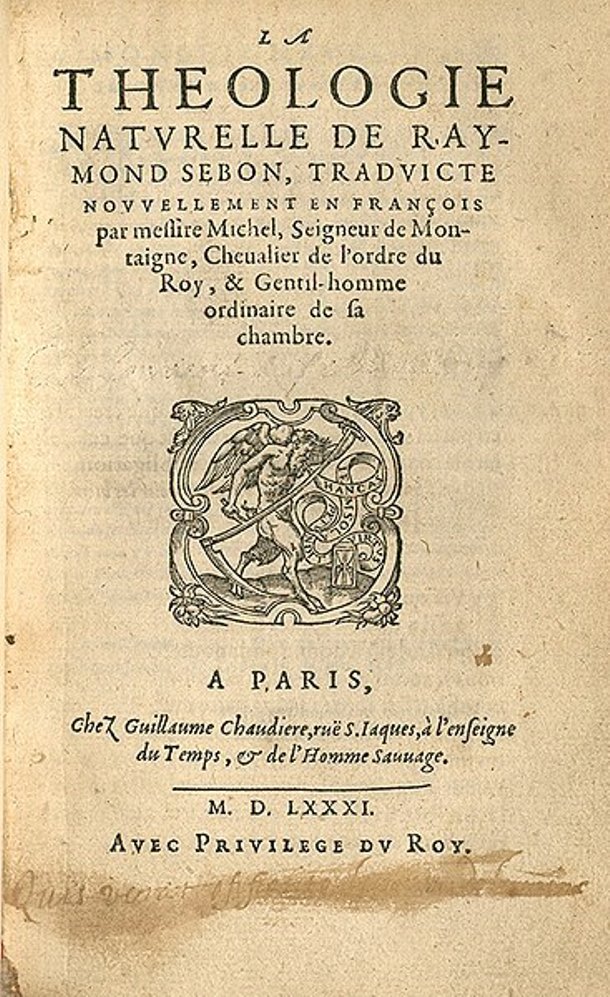

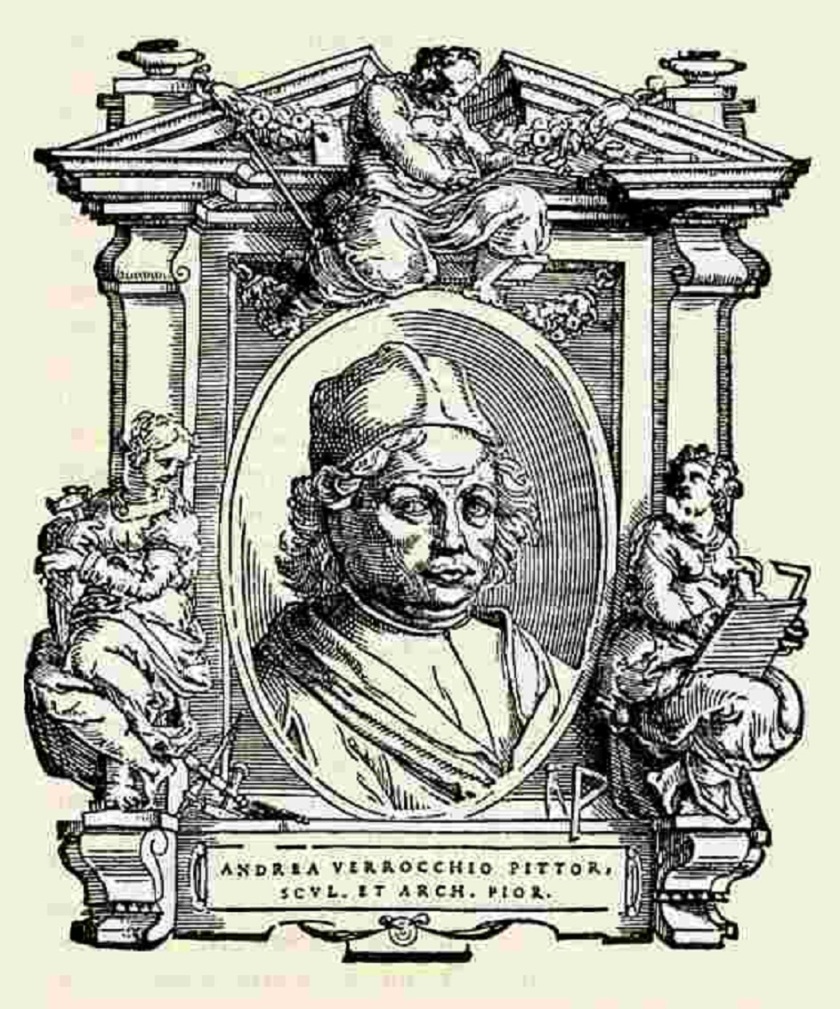
Andrea del Verrocchio, a prominent figure of the Italian Renaissance, was a master of multiple disciplines including sculpture, painting, and goldsmithing. Born in Florence around 1435, Verrocchio was a versatile artist whose influence extended far beyond his own creations, most notably as the mentor to Leonardo da Vinci. His works span a range of media, showcasing his expertise in both the sculptural and painterly aspects of Renaissance art.
Verrocchio's studio was a fertile ground for the incubation of Renaissance artistic talent. Among his most celebrated works is the bronze statue of David, commissioned by the Medici, which displays a youthful victor standing over Goliath, emblematic of Florence's civic pride and cultural ambition. This piece, alongside his equestrian statue of Bartolomeo Colleoni in Venice, exemplifies Verrocchio's skill in capturing dynamic figures and his innovative approach to bronze casting.
In painting, Verrocchio's contributions, though fewer in number, are significant for their exploration of depth and perspective, hallmarks of Renaissance artistry. His Baptism of Christ, for example, is notable not only for its own merits but also for Leonardo da Vinci's participation, which, according to legend, led Verrocchio to never paint again, outshone by his pupil's talent. However, this story is often considered apocryphal.
Verrocchio's legacy is cemented by the breadth of his work and the generations of artists he influenced. His adeptness across multiple forms—sculpture, painting, and goldsmithing—places him among the Renaissance's most versatile and influential figures. His sculptures and paintings remain pivotal in understanding the evolution of Renaissance art, characterized by a deep understanding of human anatomy, a mastery over materials, and an innovative approach to traditional themes.
For collectors and experts in art and antiques, Verrocchio's works offer a fascinating insight into the mastery and creativity of the Renaissance period. His influence on subsequent generations of artists underscores the enduring value and appeal of his creations.
For those interested in staying informed about upcoming sales and auction events featuring works by Andrea del Verrocchio, signing up for updates can provide exclusive access to the latest offerings in this realm. This ensures that enthusiasts and collectors alike remain connected to the vibrant market for Renaissance art, celebrating the legacy of one of its most distinguished masters.


Jacopo di Paolo was an Italian painter and illuminator who worked in Bologna during the fourth and fifth centuries.
Jacopo was a very versatile artist, working in several of the city's famous decorative studios and collaborating with sculptors to create drawings for sculptures. He was also involved at various levels in the political and cultural life of the city. Jacopo was enrolled in the Guild of Artists and Jewelers and held many public positions in Bologna. Jacopo's influence in Bologna lasted for half a century and his three sons also became artists.


Hans Memling (German Hans Memling, Dutch Jan van Mimmelynghe, Latin Johannes Memmelinc or Memlinc) is a Flemish painter of German origin, one of the most important artists of Flanders of the Northern Renaissance. Continuing the late Gothic painting tradition, Memling primarily painted spiritual themes. Born in Hesse, he worked mainly in Bruges, where today there is a museum named after him.

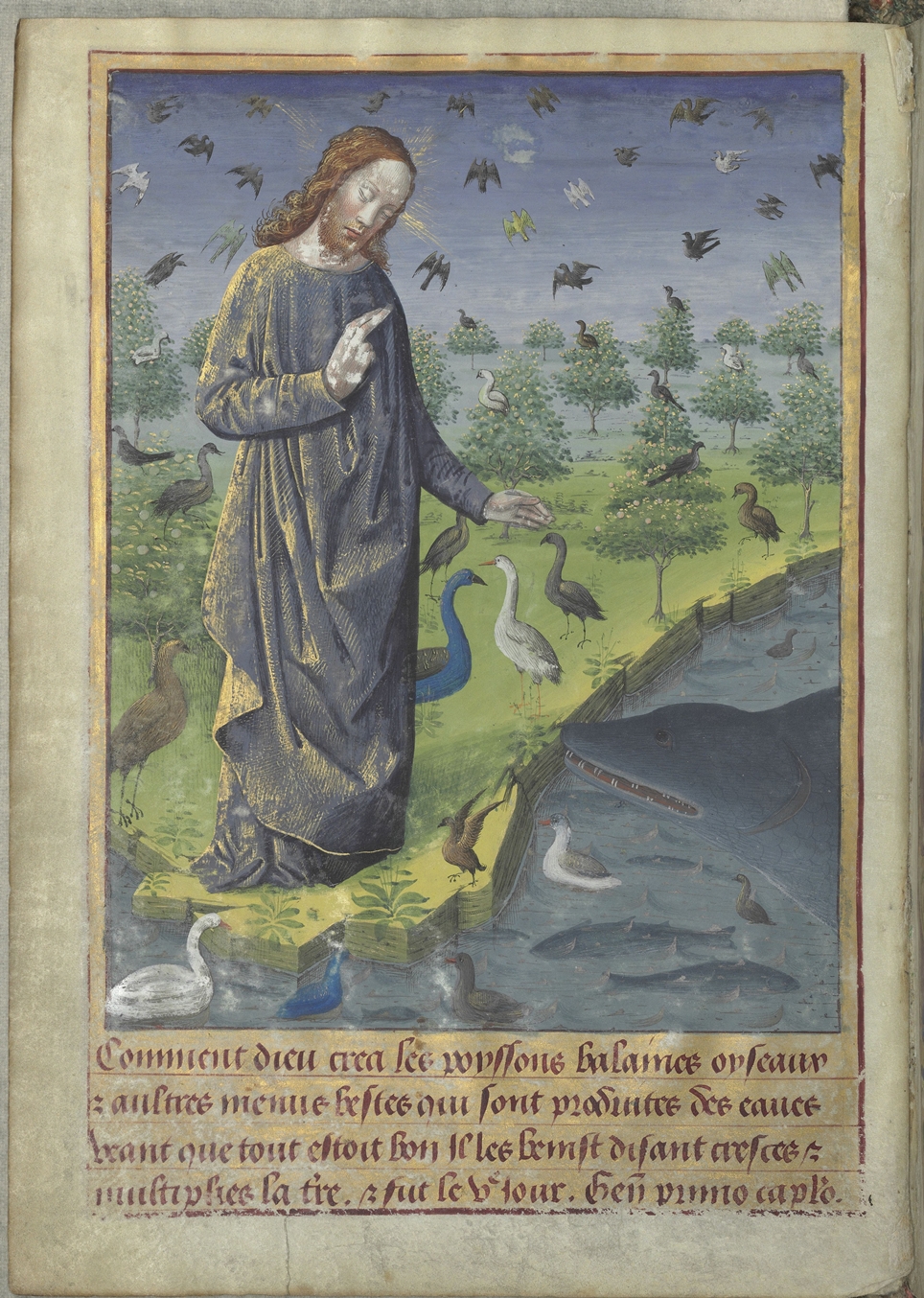
Jean Colombe was a French miniaturist and manuscript illustrator. He founded a dynasty of illuminators, including a son and grandson who continued his work even after his death.
Colombe is known to have decorated a large number of manuscripts. He was commissioned to illustrate both secular and religious texts, and he depicted scenes with many characters in elaborate architectural structures or landscapes. His illuminated manuscripts were decorated with gold or silver, brilliant colors, intricate drawings, or miniature images. Jean Colombe was patronized by Charlotte of Savoy, wife of Louis XI and a noted bibliophile. He illustrated manuscripts for the queen, her daughter Anne Beaujault, and members of the court. Colombe also entered the service of her nephew, Charles I, Duke of Savoy, who commissioned him to complete two unfinished manuscripts in his library: the magnificent Apocalypse of Jean Baptiste and Perronet Lamy and probably the most famous of all the Chapels, The Rich Estates of the Duke of Berry by the brothers de Limbourg.


Jacopo di Paolo was an Italian painter and illuminator who worked in Bologna during the fourth and fifth centuries.
Jacopo was a very versatile artist, working in several of the city's famous decorative studios and collaborating with sculptors to create drawings for sculptures. He was also involved at various levels in the political and cultural life of the city. Jacopo was enrolled in the Guild of Artists and Jewelers and held many public positions in Bologna. Jacopo's influence in Bologna lasted for half a century and his three sons also became artists.


Hans Memling (German Hans Memling, Dutch Jan van Mimmelynghe, Latin Johannes Memmelinc or Memlinc) is a Flemish painter of German origin, one of the most important artists of Flanders of the Northern Renaissance. Continuing the late Gothic painting tradition, Memling primarily painted spiritual themes. Born in Hesse, he worked mainly in Bruges, where today there is a museum named after him.


Jerry Zeniuk, a German and American artist of Ukrainian origin, is celebrated for his pioneering role in the realms of analytical, fundamental, and radical painting, movements that flourished primarily in the USA, Italy, and Germany during the 1970s. His art is distinguished by a meticulous focus on the essence of painting, exploring its potential and experiential spaces through a minimalist yet profound approach. Zeniuk's notable participation in documenta 6 in Kassel in 1977 underscored his significant contribution to these artistic trends, which has been recognized in numerous retrospectives.
Jerry Zeniuk's career includes an influential tenure as a professor at the Academy of Fine Arts in Munich from 1993 to 2011, further cementing his impact on the art world. His works, characterized by their subtle yet impactful exploration of color and form, have been included in the collections of prestigious institutions such as the Lenbachhaus in Munich, Neue Galerie in Kassel, Neues Museum Weserburg in Bremen, and internationally at the FRAC - Pays de la Loire in France and Kunstmuseum Winterthur in Switzerland, among others.
For collectors and art experts, Jerry Zeniuk's work represents a nuanced and intellectual approach to modern painting, offering depth and contemplation in each piece. His contributions have not only shaped the trajectory of contemporary art but also offer a timeless appeal to those who appreciate the layered complexities of visual expression.
Stay updated on Jerry Zeniuk's exhibitions and available works by signing up for newsletters tailored for art collectors and enthusiasts. This subscription ensures you remain informed about the latest sales and auction events featuring Zeniuk's work, providing unique opportunities to engage with the evolving landscape of contemporary art.

